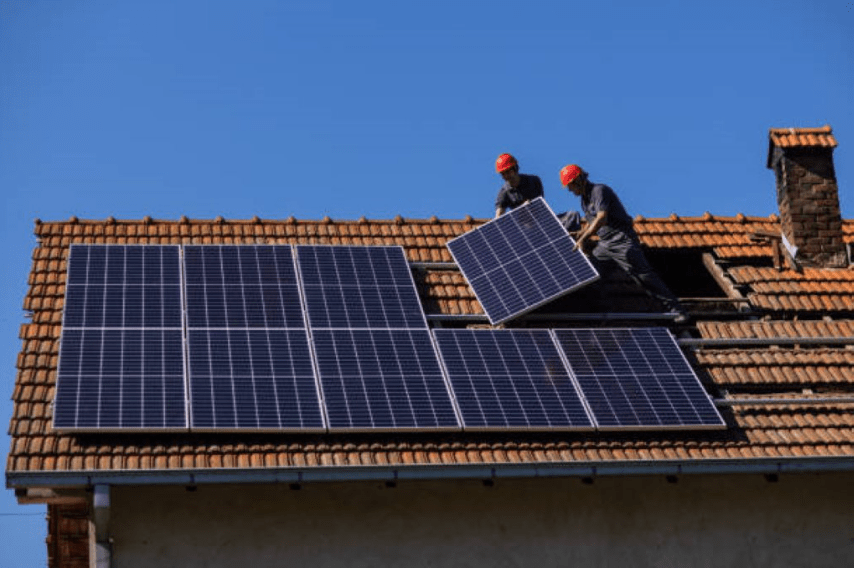In recent years, the shift towards renewable energy sources has gained significant momentum. Among these, solar power stands out as one of the most accessible and sustainable options for homeowners. Installing a house solar system not only reduces electricity bills but also contributes to environmental conservation.
This comprehensive guide will explore the various aspects of house solar systems including their benefits, components, installation process, costs, and maintenance.
Understanding House Solar Systems
A house solar systems convert sunlight into electricity, providing a renewable energy source for residential use. These systems consist of several key components that work together to capture, convert, and distribute solar energy. Here are the key components of the solar system:
- Solar Panels: These panels are the most visible part of a solar system. They capture sunlight and convert it into direct current (DC) electricity.
- Inverter: The inverter converts DC electricity generated by the solar panels into alternating current (AC) electricity, which is used by most household appliances.
- Mounting System: This system secures the solar panels to the roof or ground, ensuring they remain in place and are positioned for optimal sunlight exposure.
- Battery Storage: Batteries store excess energy generated during the day for use at night or during power outages.
- Charge Controller: This device regulates the voltage and current coming from the solar panels to the batteries, preventing overcharging and damage.
- Electrical Panel: The main service panel where solar-generated electricity is distributed to the household.
- Net Metering System: Allows homeowners to feed excess electricity back into the grid, earning credits or compensation from the utility company.
Benefits of House Solar Systems
House solar systems offer cost savings, energy independence, reduced carbon footprint, and increased home value for environmentally-conscious homeowners.
Environmental Benefits
- Reduction in Carbon Footprint: Solar energy is a clean, renewable resource that reduces reliance on fossil fuels, thereby lowering greenhouse gas emissions.
- Sustainable Energy Source: Solar power is abundant and renewable, making it a sustainable choice for long-term energy needs.
- Conservation of Natural Resources: Utilizing solar energy reduces the need for non-renewable energy resources like coal, oil, and natural gas.
Economic Benefits
- Lower Electricity Bills: Solar panels generate electricity, which can significantly reduce or even eliminate monthly electricity bills.
- Increased Property Value: Homes equipped with solar energy systems often see an increase in property value due to the long-term energy savings they provide.
- Government Incentives: Many governments offer incentives, tax credits, and rebates to encourage the adoption of solar energy, reducing the initial installation costs.
- Energy Independence: Generating your electricity reduces dependence on the utility grid and protects against rising energy costs.
Practical Benefits
- Low Maintenance: Solar systems require minimal maintenance, usually limited to cleaning the panels and periodic inspections.
- Reliable Energy Source: With battery storage, solar systems provide a reliable energy source even during grid outages.
- Scalability: Solar systems can be scaled up to meet increasing energy needs by adding more panels or expanding battery storage.
Installation Process of Solar Systems
The installation process involves mounting solar panels on the home roof, connecting them to the electrical system, and ensuring proper functionality.
1. Site Assessment
A professional installer will conduct a site assessment to evaluate the suitability of your property for a solar system. This includes analyzing roof orientation, shading, and structural integrity.
2. System Design
Based on the site assessment, the installer will design a solar system tailored to your energy needs and roof configuration. This design will determine the number and placement of solar panels and the type of inverter and mounting system.
3. Permits and Approvals
Before installation, necessary permits and approvals from local authorities and utility companies must be obtained. The installer typically handles this process.
4. Installation
The installation process involves several steps:
- Mounting System Installation: The mounting system is attached to the roof or ground.
- Panel Installation: Solar panels are securely mounted onto the mounting system.
- Electrical Wiring: The inverter and other electrical components are connected, and wiring is run to the electrical panel.
- Inverter and Battery Setup: The inverter and battery (if applicable) are installed and connected to the system.
5. Inspection and Activation
After installation, the system must be inspected to ensure it meets all safety and regulatory standards. Once approved, the system can be activated, and you can start generating solar power.
Costs and Financing Options
Explore costs and financing options for house solar systems including purchase, leasing, loans, tax incentives, and solar financing programs.
1. Initial Costs
The initial cost of a house solar system can vary widely based on several factors, including the size of the system, the type of equipment used, and installation complexities. On average, residential solar systems can range from $15,000 to $25,000 before incentives and rebates.
2. Financing Options
a) Outright Purchase: Paying for the system upfront provides the most significant long-term savings and makes you eligible for tax credits and rebates.
b) Solar Loans: Many financial institutions offer loans specifically for solar installations, allowing you to spread the cost over several years.
c) Leasing and Power Purchase Agreements: With a lease or PPA, a third party owns and maintains the solar system, and you pay a fixed monthly rate or a rate per kilowatt-hour for the electricity generated.
d) Government Incentives: Federal, state, and local incentives can significantly reduce the cost of installing a solar system. The federal Investment Tax Credit (ITC) allows you to deduct a percentage of the installation cost from your taxes.
Maintenance and Longevity
Regular maintenance ensures optimal performance and longevity of house solar systems including cleaning panels, monitoring output, and occasional repairs.
1. Routine Maintenance
House solar systems require minimal maintenance. Regular cleaning of the panels to remove dust, debris, and bird droppings ensures optimal performance. This can be done with a hose or professional cleaning service.
2. Periodic Inspections
It is advisable to have the system inspected by a professional every few years to check for any potential issues with the panels, inverter, or mounting system. Ensuring that all components are functioning correctly can extend the system’s lifespan.
3. Longevity
Most solar panels come with a warranty of 20 to 25 years, and they can continue to produce electricity efficiently for 30 years or more. Inverters typically have a shorter lifespan of around 10 to 15 years and may need to be replaced once during the system’s lifetime.
Conclusion
House solar systems offer a multitude of benefits from reducing electricity bills and environmental impact to increasing property value and energy independence.
Understanding the components, benefits, installation process, and costs can help homeowners make an informed decision about investing in solar energy.



